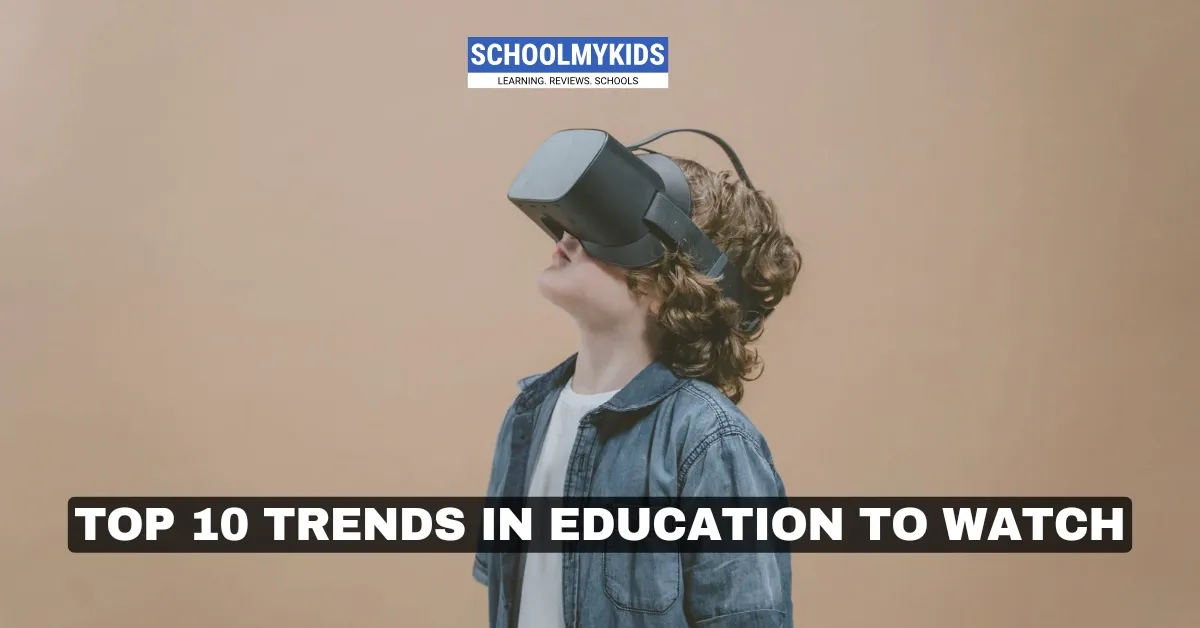The world of education is in constant flux, adapting to societal changes, technological advancements, and evolving pedagogical theories. Keeping up with emerging trends is essential for educators, policymakers, and students alike. Here, we delve into the top 10 trends shaping the future of education, outlining their potential impact and significance.
Top 10 trends shaping the future of education
1. Personalized Learning
Personalized learning is gaining traction as a key educational trend. It involves tailoring the learning experience to meet the individual needs, skills, and interests of students. This trend leverages technology to create adaptive learning environments, allowing students to learn at their own pace.
- Impact: Personalized learning enhances student engagement and motivation by providing content that resonates with their learning style. It promotes mastery of concepts rather than a one-size-fits-all approach.
- Example: Platforms like Khan Academy or DreamBox adjust difficulty levels based on a student’s performance, offering personalized content and assessments.
2. Artificial Intelligence and Machine Learning in Education
AI and machine learning are revolutionizing the educational landscape by providing smart learning tools, data analysis, and automated administrative tasks. These technologies help in automating grading, offering personalized tutoring, and even identifying learning gaps.
- Impact: AI enhances both teaching and learning experiences, making education more accessible and efficient. Predictive analytics can identify students at risk of falling behind, allowing for timely interventions.
- Example: Tools like AI-driven chatbots help answer student queries in real-time, while AI-powered platforms such as Coursera provide personalized course recommendations.
3. Hybrid and Blended Learning
The shift to online education during the COVID-19 pandemic has solidified hybrid and blended learning as permanent fixtures in the educational realm. Blended learning combines face-to-face instruction with online learning, providing flexibility and a mix of learning methods.
- Impact: This approach allows for more flexible learning schedules, accommodates different learning preferences, and encourages greater student autonomy.
- Example: Universities worldwide are now offering hybrid programs where students attend some classes on campus and complete other work remotely.
4. Gamification in Education
Gamification, the incorporation of game elements into non-game settings, is being widely adopted in education to increase student engagement. Games encourage competition, reward systems, and instant feedback, making learning more dynamic.
- Impact: By making learning fun and interactive, gamification fosters deeper engagement, enhances problem-solving skills, and encourages collaboration among students.
- Example: Tools like Kahoot! and Classcraft turn quizzes and lessons into engaging games, while Minecraft Education Edition helps students grasp complex concepts through creative exploration.
5. Social and Emotional Learning (SEL)
Social and emotional learning emphasizes the development of emotional intelligence, including skills like empathy, self-regulation, and communication. Educators are increasingly integrating SEL into curricula to help students manage emotions, build positive relationships, and make responsible decisions.
- Impact: SEL has been shown to improve academic performance, reduce behavioral problems, and promote long-term well-being.
- Example: Programs like the Collaborative for Academic, Social, and Emotional Learning (CASEL) provide frameworks for schools to incorporate SEL into their teaching practices.
6. Microlearning
Microlearning breaks down educational content into bite-sized lessons, making learning more digestible and focused. This trend is particularly popular in online education, where students can access short, targeted lessons on demand.
- Impact: Microlearning supports just-in-time learning and is ideal for today’s fast-paced, mobile-first world. It helps improve retention by delivering information in small, manageable chunks.
- Example: Platforms like Duolingo offer microlearning modules to teach languages through quick, daily exercises.
7. Competency-Based Education (CBE)
Competency-Based Education (CBE) focuses on mastery of specific skills or competencies rather than time spent in class. Students advance upon demonstrating their ability to apply knowledge and skills, making the learning process more flexible and customized.
- Impact: CBE allows students to progress at their own pace and ensures that they acquire the necessary skills before moving forward. This model can be particularly beneficial in adult education and vocational training.
- Example: Western Governors University in the U.S. is a leader in CBE, offering programs where students progress by demonstrating mastery in required competencies.
8. STEM and STEAM Education
STEM (Science, Technology, Engineering, and Mathematics) and STEAM (adding Arts to the mix) education have become increasingly important as we prepare students for a future dominated by technological and creative industries. These programs emphasize hands-on, inquiry-based learning and problem-solving.
- Impact: STEM and STEAM education help bridge the skills gap in high-demand industries, foster innovation, and encourage critical thinking.
- Example: Schools are introducing programs such as robotics, coding, and digital art, alongside traditional subjects, to foster creativity and technical skills.
9. Global Citizenship Education (GCED)
Global Citizenship Education aims to empower students to become responsible and active participants in a globalized world. It encourages understanding of global issues such as sustainability, human rights, and cultural diversity, preparing students to engage in cross-cultural collaboration.
- Impact: GCED fosters critical thinking, empathy, and an understanding of global interconnections, which are crucial for navigating the complexities of today’s world.
- Example: The United Nations' GCED framework guides schools in integrating global issues into their curricula, encouraging students to take part in global projects and discussions.
10. Lifelong Learning and Upskilling
As the job market continues to evolve rapidly, lifelong learning and upskilling are becoming critical trends. Adults are increasingly seeking opportunities to learn new skills, whether through formal education, online courses, or corporate training programs.
- Impact: Lifelong learning promotes adaptability and career mobility, allowing individuals to stay competitive in the workforce. Employers are also recognizing the value of continuous employee development to keep pace with industry advancements.
- Example: Platforms like LinkedIn Learning and Udemy offer courses for professionals to upskill in areas like digital marketing, coding, leadership, and more.
Conclusion
The educational landscape is evolving at an unprecedented pace, driven by technological advancements, societal shifts, and a growing emphasis on personalization and skills development. These top 10 trends reflect the move toward more flexible, student-centered learning environments that prioritize both academic knowledge and essential life skills. By staying informed and adapting to these trends, educators and institutions can better prepare students for the challenges and opportunities of the future.








Be the first one to comment on this story.